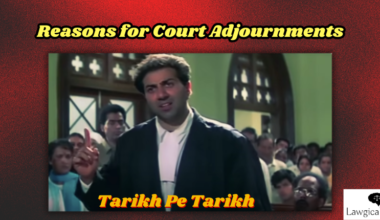Cheque Bounced – Now what should I do? What is the legal process further? What are the stages in a cheque bounce case? Such doubts may overwhelm a person who did not get the payment against a liability in the first place, and now does not know how to proceed legally against the person who drew such cheque. Knowing the procedure for cheque dishonour may help ease out some trouble.
The Negotiable Instruments Act, 1881 provides for the criminal provision to punish for dishonour of cheque due to insufficiency of funds in the bank account. It may be noted that not every cheque bounce case can be prosecuted under Section 138 of NI Act. But, only those cheques dishonoured due to insufficiency etc. of funds. Hence, a cheque bounced due to mismatched signatures cannot be proceeded through cheque bounce case procedure under NI Act Section 138.
Cheque Bounce under Section 138 of NI Act
Being aware of the legal requirements is the first step towards the remedy. The specific provision reads as:
“138. Dishonour of cheque for insufficiency, etc., of funds in the account.—Where any cheque drawn by a person on an account maintained by him with a banker for payment of any amount of money to another person from out of that account for the discharge, in whole or in part, of any debt or other liability, is returned by the bank unpaid, either because of the amount of money standing to the credit of that account is insufficient to honour the cheque or that it exceeds the amount arranged to be paid from that account by an agreement made with that bank, such person shall be deemed to have committed an offence and shall, without prejudice to any other provision of this Act, be punished with imprisonment for 4 [a term which may be extended to two years’], or with fine which may extend to twice the amount of the cheque, or with both: Provided that nothing contained in this section shall apply unless—
(a) the cheque has been presented to the bank within a period of six months from the date on which it is drawn or within the period of its validity, whichever is earlier;
(b) the payee or the holder in due course of the cheque, as the case may be, makes a demand for the payment of the said amount of money by giving a notice; in writing, to the drawer of the cheque, 5 [within thirty days] of the receipt of information by him from the bank regarding the return of the cheque as unpaid; and
(c) the drawer of such cheque fails to make the payment of the said amount of money to the payee or, as the case may be, to the holder in due course of the cheque, within fifteen days of the receipt of the said notice.
Explanation.—For the purposes of this section, “debt of other liability” means a legally enforceable debt or other liability.”
Thus, the specific requirements of the aforementioned provision include dishonour of a cheque drawn against a debt or liability, due to insufficiency of funds. Although the timelines provided hold equal importance.
Cheque Bounce Case Procedure in India
As per Section 138 of NI Act, the process starts with intimation regarding dishonour of cheque. The cheque should have been presented to the bank for encashment within 6 months of the date it was drawn, or within the validity mentioned on the same. Once a person is informed of dishonour due to insufficiency of funds, Cheque Bounce Notice in written form has to be served to the person who drew the cheque against a legal debt, within 30 days of receiving information about cheque dishonour from the bank concerned.
Since the motive behind provision of cheque bounce under NI Act is to secure the financial interests of the payee (person in whose favour such cheque was drawn), and not to punish the drawer of such cheque, no course of action arises if payment is duly made on receiving notice the Notice for cheque bounce. However, if the drawer of cheque still fails to make the payment, the payee can proceed with a criminal complaint.
Cheque Bounce Complaint
As mentioned earlier, after expiry of 15 days of the notice being received by the said drawer of cheque, the person has to file a criminal complaint within 30 days since the cause of action arose, before the appropriate Court. Such Court is usually the Magistrate Court within whose jurisdiction the branch of the payee’s bank account is located.
The complainant has to be present before the Magistrate concerned carrying the supporting documents including cheque bounce memo and proof of debt/legal liability. If the Magistrate is convinced of a prima facie case under Section 38 of NI Act, it follows with summoning the drawer as accused and commencement of the trial. Both the parties and witnesses are examined, and the Court considers the evidence produced by the parties to conclude whether the complainant’s claim was genuine and the drawer of cheque was at fault. When the accused does not appear before the Court after summons are issued, the Court may issue bailable warrant, then non-bailable warrant followed by declaration of Proclaimed Offender.
Section 138 NI Act Punishment
If the Court finds that the complainant had proved his/her case that the cheque was drawn against a legal debt and the same was dishonoured due to insufficient funds, the drawer of cheque may be punished with imprisonment upto 2 years, fine amounting twice the amount involved in cheque, or with both.
[Disclaimer] – The information contained in this site is provided for informational purposes only, and should not be construed as legal advice on any subject matter.
FAQs on Cheque Bounce Case Procedure in India
Q- What are the stages in cheque bounce case?
A- Broadly speaking, the cheque bounce case procedure may be categorised into dishonour of cheque, serving legal notice, cheque bounce complaint, trial and decision. If either of the parties are dissatisfied with the decision of the said Court, they may proceed with appeals as well.
Q- Is it easy to get bail in a cheque bounce case?
A- Primarily, cheque bounce is a bailable offence, hence, a person can easily avail the benefit of bail with or without sureties. However, if the accused/drawer of cheque does not appear before the Court concerned after multiple summons are issued, the Court may issue a non-bailable warrant against the person.
Q- What is Defence evidence in cheque bounce case?
A- It may be proved on behalf of Defence that the cheque was not issued against a debt of liability but as a security, etc. Forgery of cheque may also be the case, it particularly depends upon the facts of the case.
Q- What is the maximum punishment for cheque Dishonour?
A- Cheque bounce punishment may include imprisonment for a term which may be extended upto 2 years, or fine of twice the amount of the cheque or both.








